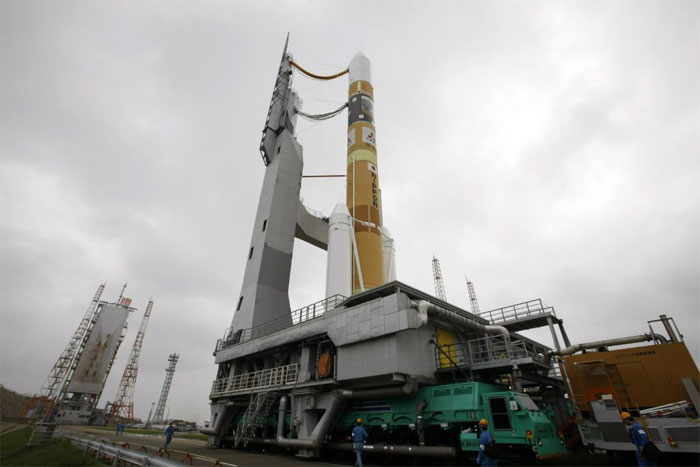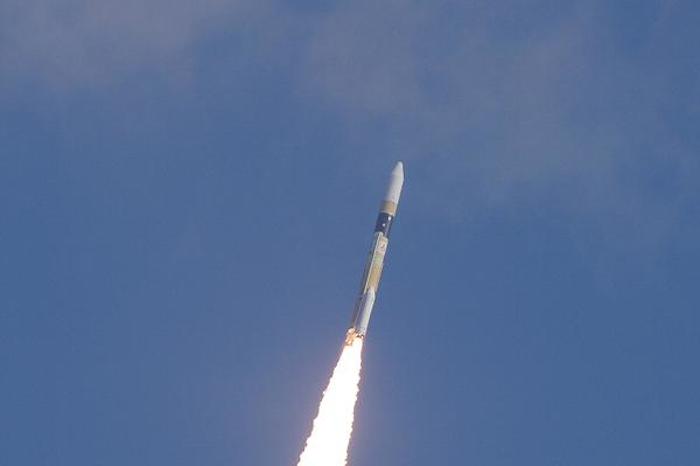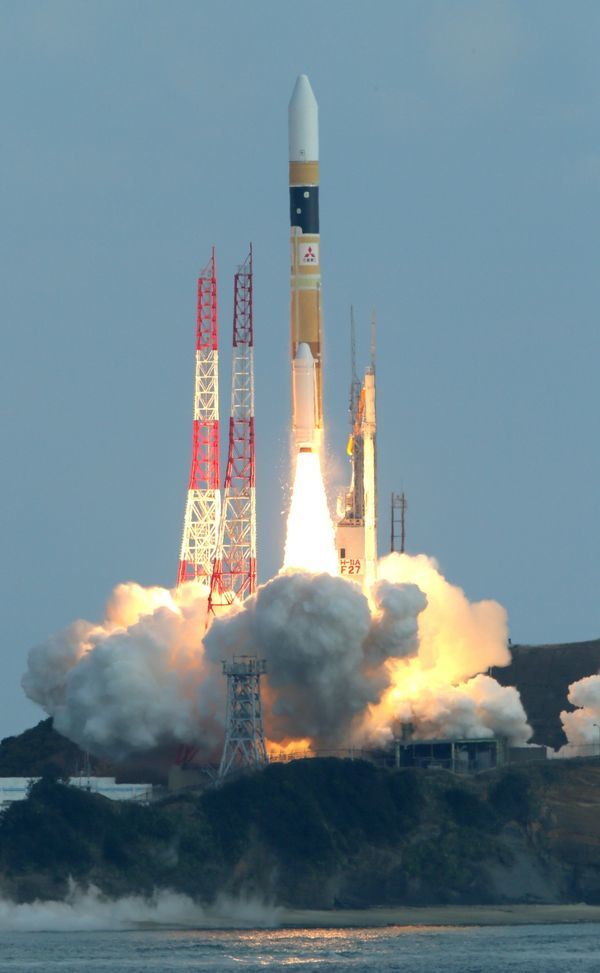.
29.01.2015

Japanese rocket launch postponed by poor weather
.
A threat of thick clouds kept a Japanese H-2A rocket from launching Thursday with a government-owned radar reconnaissance satellite.
Japanese officials did not set a new target launch date, and said the liftoff would be rescheduled based on forecast weather conditions over the next few days.
The H-2A rocket was supposed to take off from the Tanegashima Space Center in southwest Japan at 0121 GMT Thursday (8:21 p.m. EST Wednesday), the opening of a 13-minute launch window.
Liftoff was scheduled for 10:21 a.m. local time in Japan.
The Japan Aerospace Exploration Agency and Mitsubishi Heavy Industries — owner of the Tanegashima launch pad and the commercial operator of the H-2A rocket — announced the launch’s postponement before engineers began loading cryogenic hydrogen and oxygen propellants into the two-stage rocket.
Ground crews rolled the rocket to Launch Pad No. 1 at Tanegashima Space Center’s Yoshinobu launch complex Wednesday before the flight was postponed.
The weather forecast called for thick clouds penetrating into a layer of freezing temperatures over the island space center. Officials worried the rocket could generate lightning when it punched through the freezing clouds.
The 174-foot-tall launcher is flying in its basic configuration with two strap-on solid rocket boosters and a four-meter (13.1-foot) diameter payload fairing.
The flight will mark the 27th launch of an H-2A rocket since its debut mission in August 2001, and the third H-2A liftoff in less than four months.
The mission’s payload is an Information Gathering Satellite equipped with a radar spy instrument capable of peering through clouds, darkness and camouflage to obtain high-resolution imagery of Earth’s surface.
The exact capabilities of the satellite are kept secret by the Japanese government.
Japan established the space-based reconnaissance program in the wake of a North Korean missile test over Japanese territory in 1998. Although the program was initially aimed at monitoring North Korea, the satellites can take pictures of nearly any place on Earth each day.
The first Information Gathering Satellites were launched in 2003. An H-2A rocket sent up the newest spy satellites in January 2013.
Japan’s IGS satellite program is run by the Cabinet Satellite Intelligence Center, which reports directly to the government’s executive leadership.
Quelle: SN
-
H-2A rocket with satellite set for liftoff on Sunday
Mitsubishi Heavy Industries Ltd. and the Japan Aerospace Exploration Agency said Thursday they have rescheduled to Sunday the postponed launch of an H-2A rocket carrying a backup information-gathering radar satellite.
The launch of the H-2A Launch Vehicle No. 27, originally scheduled for Thursday, was put off due to expected bad weather. It will lift off from the Tanegashima Space Center on Tanegashima island in Kagoshima Prefecture, at 10:21 a.m. Sunday, Mitsubishi Heavy and JAXA said.
Japan introduced information-gathering satellites following North Korea’s ballistic missile launch in 1998.
Currently, the Japanese government has four such satellites — two optical sensor satellites used when weather is good and two radar satellites capable of conducting observation even in bad weather conditions.
The satellites are operated by the Cabinet Satellite Intelligence Center, and gather information necessary for crisis management in light of national security and in times of large-scale natural disasters.Speech
Quelle: TheJapanNews
-
Update: 1.02.2015
.
H-2A rocket boosts Japanese radar spy satellite into orbit

Japan launched a new satellite Sunday to reinforce the country’s fleet of orbiting spy platforms charged with monitoring its neighbors in the Asia-Pacific.
The spacecraft carries a sophisticated radar payload designed to survey the globe night and day — and in all weather conditions — from an orbit about 300 miles above Earth. The synthetic aperture radar instrument can see through clouds and camouflage, but its exact capabilities are kept secret by the Japanese government.
The satellite blasted off at 0121 GMT Sunday (8:21 p.m. EST Saturday) on top of a 17-story H-2A rocket from the Tanegashima Space Center in southwestern Japan.
Two strap-on boosters consumed their pre-packed solid propellant in less than two minutes as the H-2A rocket soared south from its launch pad at Tanegashima. The rocket’s hydrogen-burning LE-7A and LE-5B first and second stage engines completed their planned firings as programmed before deploying the reconnaissance payload in space.
The rocket took off at 10:21 a.m. local time in Japan after a three-day delay caused by unfavorable weather at the launch site.
The Japan Aerospace Exploration Agency, which owns and operates the Tanegashima launch base, declared Sunday’s flight a success in a press release. The H-2A rocket launch was conducted by Mitsubishi Heavy Industries, the vehicle’s builder and commercial operator.
The launch marked the third H-2A rocket mission in less than four months, following launches of Japan’s Himawari 8 weather satellite in October and the Hayabusa 2 asteroid sample return probe in December.
The Information Gathering Satellite launched Sunday joins a network of surveillance craft run by the Cabinet Satellite Intelligence Center, which reports directly to the Japanese government’s executive leadership.
The radar spy craft was built as a backup for reconnaissance satellites launched on earlier missions.
Sunday’s launch was the 27th flight of an H-2A rocket since the launcher’s debut mission in August 2001, and the rocket’s 21st consecutive success since February 2005. It was the ninth H-2A launch in support of Japan’s spy satellite program.
Japan established the space-based reconnaissance program in the wake of a North Korean missile test over Japanese territory in 1998. Although the program was initially aimed at monitoring North Korea, the satellites can take pictures of nearly any place on Earth each day.
Japanese officials say data from the Information Gathering Satellites support civilian applications, such as responding to natural disasters.
The next H-2A launch is scheduled for March with an IGS payload carrying a high-resolution optical camera.
After the March flight, Japan plans plans up to three more launches from Tanegashima this year.
An H-2B rocket fitted with an extra hydrogen-fueled main engine and four solid rocket boosters will take off in August with an HTV cargo carrier for the International Space Station.
Japan’s Astro-H X-ray astronomy observatory and the Telstar 12V communications satellite — the H-2A’s first dedicated commercial launch — are currently scheduled to take off before the end of the year.

Quelle: SN
4054 Views

